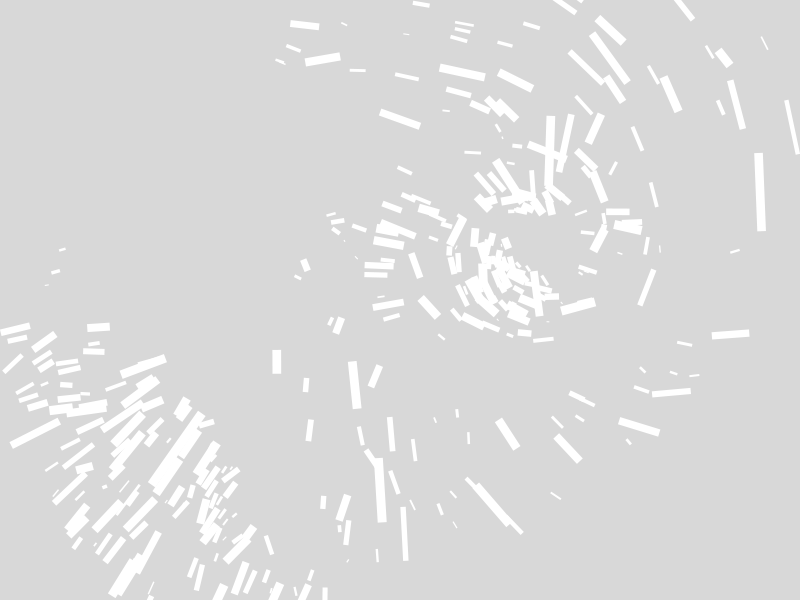Interview with Simon Steen-Andersen – a composer who is not scared of thinking inside the box.
The Danish composer Simon Steen-Andersen is a man of many facets. Edition·S – music¬sound¬art met the extraordinary artist in between piles of projects, visions, sounds and performances at this year´s Huddersfield Contemporary Music Festival for a talk about notation, working with concepts and of cause his latest work Black Box Music, which was performed at the festival. The old factory building Bates Mill that hosted the performance was haunted by euphoric expectations and left no audience untouched by the enormous projections and the symphonic surround-sound.
Simon has previously described the piece as a “deconstruction of conducting and puppet theatre as well as an exploration and exploitation of the audio/visual relations inherent in conducting and staging”. We wanted to challenge this and get to know the man behind the music.
How do you see yourself as an artist?
“I do not see myself as a typical composer. More do I see myself as someone who starts in the music and then expands the musical space to embrace and include other art forms. I still consider the things I do, as being music but in an expanded universe. It is extremely important to me that I do not lose the details of the music at the expense of adding for example visuals. I try to construct something where you cannot divide it into a foreground or background and the sounding and the visual aspects become fully integrated and inseparable. I am in no way discouraged or the least intimidated by genre boundaries or barriers between art forms. And this makes me feel completely free.”
As a composer, how do you use notation?
“The notation is for me mainly an opportunity to arrange things in time. Therefore I use the notation’s more traditional function to a lesser extent where they represent a tone or a pitch. I usually use the notes to show an action of what to do, in contrast to the traditional notation that to some extend provides a picture of the result and is much more an instruction for the musicians on what sound to aim for. I use the notes as an indication of an action, which means that you cannot read the resulting sound of the piece in the notation. It makes sense to say that it emphasises the production of the sounds and there is much more focus on movement and other physical aspects. So, the difference lays in an orientation towards the action-based notation rather then the result-based notation.”
How do you see the future of notation?
“There have been lots of attempts to revolutionize and completely rethink the classical notation, which all have more or less failed. My approach is communicating and talking to musicians through the language they are already familiar with, and then search for pragmatic ways to personalize it. As a starting point there are of course lots of limitations in classical notation but I find it an interesting challenge to work with this dogma and then explore how much I can bend, break or change it. So, I do not think that the future notation will offer any new radical and useful solutions that we have not seen already.”
How do you work with symbols, ideas and concepts in your music?
“If I had to state my development and my goal over the past decade in one sentence, it has been to get away from the musical experience as an abstract parallel universe, a detached magical world without any connection to the real world. Relatively early in my career I felt an urge to create some kind of connection between the music and the reality. But at the same time I was aware of the risk of losing what is unique to the musical experience when establishing too strong or too concrete connections between them. You can easily lose the experience of the detail and the experience of focused time or presence, which both, in my opinion, make the musical experience unique.
The other thing I have tried is to construct a stronger conceptual meta-structure, which can in some way ensure a narrative, and the piece can become its own micro cosmos consisting of its own logics and rules as well as pointing outside of itself. Here lies another great risk, because the stronger or more important an idea becomes for a piece, the less important becomes the details. The extreme is when there is no difference between imagining an idea and actually experiencing it realized. I try to find a strong idea but without affecting the other end of the scale, namely the detail and the presence in time, so it still needs to be realised and experienced live. In this was the concept has a kind of polyphonic relationship to the detail, existing side by side in balance mutual exchange.”
How did you work with all this in Black Box Music?
“The first part of Black Box Music is about timing and the relationship between gestures and sounds. It starts of with classical orchestra/conductor relations and clichés. I try to establish and exploit the logics between the conductor’s gesture, the response of the orchestra and our expectations. For example: In a big orchestra somehow everybody agrees on playing late at the same time, instead of ON the entry marked by the conductor. A simulation of this becomes a kind of theme in the piece and after a while I start playing around with this logic. The orchestra’s reaction to the conductor’s gesture starts getting faster and faster, shortly it gets in sync with the conductor and then the ensemble ends up being ahead conductors entry gesture. I like to work around this kind of idea – to establish a logic and as soon as this logic has become natural and something you accept and expect, then interrupt it either trough bending it or breaking it entirely.”
